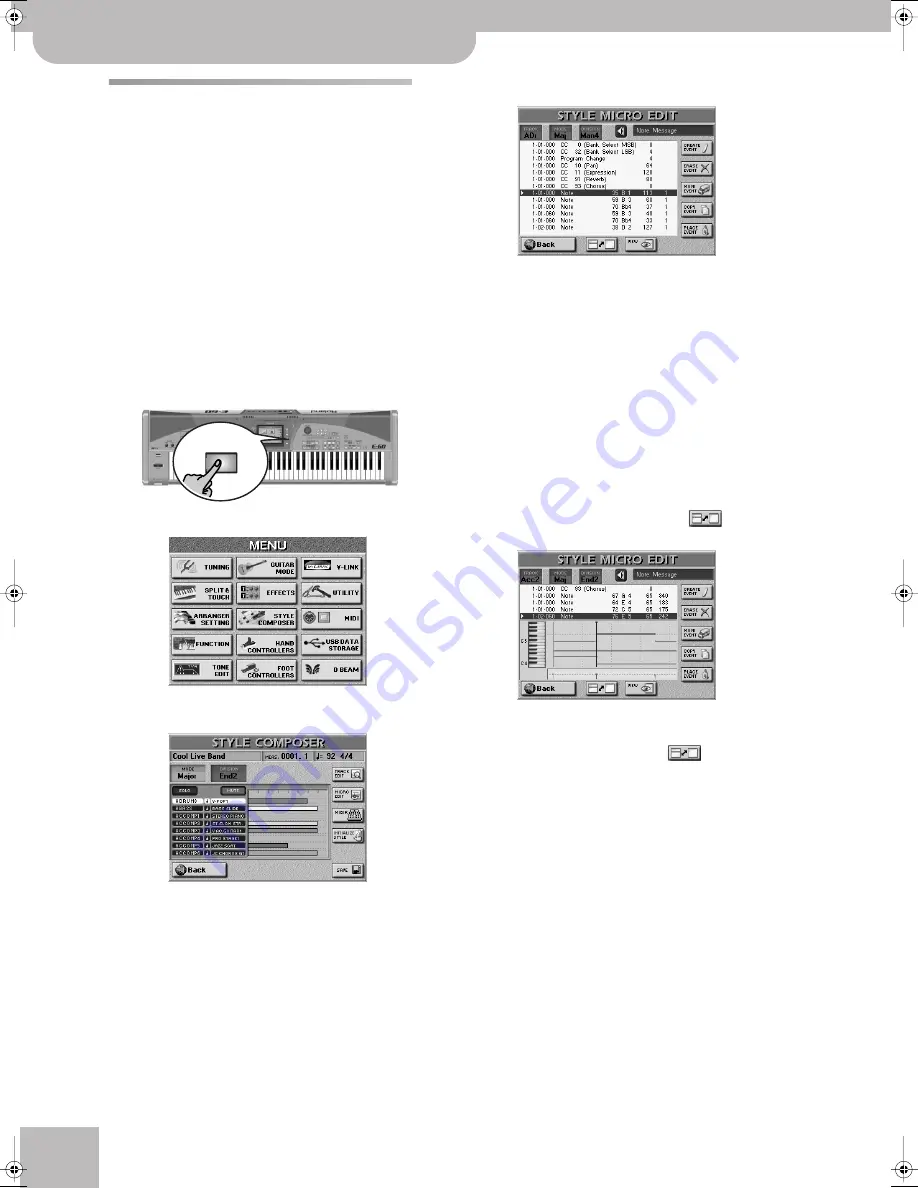
Programming Styles (Style Composer)
170
r
E-60/E-50
Music Workstation
Editing individual Style events
(Style Micro Edit)
Select this mode if you need to change just one aspect
of an otherwise perfect Style.
In this section, we will use the word “event” for any
kind of message. An event is thus a command (or
instruction) for the Arranger.
You can only view and edit one track at a time. There-
fore, be sure to check the TRACK setting before editing
the events displayed on this page.
(1) Select and load a (different) Style.
This is not necessary if you want to edit the Style you
have just recorded. See “Selecting Music Styles” on
p. 25 and “Style Finder: quickly locating Styles” on
p. 73 for how to load a Style.
(2) Press the
[MENU]
button.
The display changes to:
(3) Press the
[STYLE¥COMPOSER]
field.
(4) Press the
[MICRO¥EDIT]
field.
The display changes to:
(5) Press the
[TRACK]
field and use the
[DATA÷ENTRY]
dial or the
[DEC]
/
[INC]
buttons to select the track
you want to edit.
(6) Press the
[MODE]
field and use the
[DATA÷ENTRY]
dial or the
[DEC]
/
[INC]
buttons to select the Mode
you want to edit (Major, minor, 7th).
(7) Press the
[DIVISION]
field and use the
[DATA÷ENTRY]
dial or the
[DEC]
/
[INC]
buttons to select the Division
you want to edit (MAIN 1~4, Fill Up 1~3, Fill Dwn
1~3, Intro 1~4, Ending 1~4).
General notes about STYLE MICRO EDIT
■
Graphic representation of your data (piano roll)
To getter a better idea of where your data are located
and how they are distributed, press the
field.
The display then changes to:
Except for a (perhaps) clearer representation of the
data on the selected track, all other operations are
the same as in standard view. Press
again to
see more values again.
Use the
[DATA÷ENTRY]
dial and
[ß][†]
buttons to scroll
through the available events.
■
Position indications
Sequencers only register “events” whose positions
and distances specify when the notes are to be
sounded or when they should change (i.e. their
“sequence”).
Each event is executed at a given point in time, which
is why they all have a position indication
(“1-01-119”, for example). The first figure refers to
the bar, the second to the beat within that bar and
the third to the clock (CPT) between the current beat
and the next. Each beat of a 4/4 bar comprises 120
clocks.
MENU
E-60_50_OM_UK.book Page 170 Thursday, June 22, 2006 10:06 AM






























